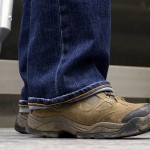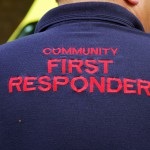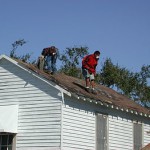Amy Howell
As a freelance writer, Amy knows just enough to be dangerous to herself when talking with experts in various fields. A typical day might include researching OSHA regulations (for MySafetySign!), treatments for vertebral compression fractures, applications of data-driven insights or advancements in aircraft engines or genetic testing. Covering home design and décor, however, has been her home turf for more than a dozen years. She received her B.A. in Journalism from Miami University (no, not the one in Florida) and recently checked-off a lifelong dream of watching a NASA rocket launch.
Amy Howell's Latest Posts

Study: Workers’ comp laws increasingly benefit employers, not employees
Through the great “compensation bargain” known as workers’ comp, if an employee is injured or disabled on the job, insurance provides reimbursement for medical expenses and lost wages. In exchange, workers relinquish most rights to sue their employer. But, according to a new investigation from the non-profit ProPublica and National Public Radio (NPR), legislative changes […]

NIOSH tackles fatigue during disaster response
The National Institute for Occupational Safety and Health (NIOSH) has released a new web-based training program that addresses one of the lesser-discussed threats facing emergency responders: sleep deprivation and fatigue. Any worker who gets less than seven to eight hours of sleep — the amount recommended for adults by the National Sleep Foundation — increases their personal […]

Overhead power lines pose highest risk during non-electrical work
Since 1992, when the Bureau of Labor Statistics began keeping track, overhead power lines have caused more work-related electrical injuries than any other type of electrical contact. They were also the No. 1 cause of electrical fatalities from 1992 through 2010, accounting for 44 percent. While power line construction and electrical work see the highest […]

Reports suggest negligence behind deadly DuPont accident
New information on a deadly pesticide plant accident seems to support the need to reassess how safety regulations at chemical facilities are managed. Last November, four workers at DuPont’s La Porte, Texas, facility were killed by exposure to methyl mercaptan — a toxic gas. Although an investigation by the U.S. Chemical Safety Board (CSB) is ongoing, […]

EPA rule targets “sham recycling” of industrial hazardous waste
For those of us without an intimate understanding of environmental regulations, the Environmental Protection Agency’s “Definition of Solid Waste” seems an unlikely source for requirements regarding the recycling of hazardous waste. But the EPA’s final rule, published last week, will significantly affect how hazardous secondary materials — by-products like sludge that are generated during industrial […]

New FAA rule aims to reduce air travel fatality risks
With the goal of reducing the fatality risk of commercial air travel, the Federal Aviation Administration (FAA) has taken a step to “fill the gap” between industry-wide regulations and operator-specific circumstances. Last week, the FAA issued a final rule requiring that most commercial airlines in the U.S. create safety management systems (SMS). Simply stated, a […]

Where’s the (safe) beef?
The new year is igniting fresh debate between the U.S. and Europe surrounding the safety of imported beef. After a 16-year ban on beef from Europe, it was announced earlier this month that Ireland had passed U.S. inspections, clearing the way for Irish beef to reach American store shelves. The U.S. enacted the ban in […]

A refresher: Scissor lift safety
In the construction industry, working at heights even as low as 6 feet can be a dangerous proposition, with falls ranking as the leading cause of worker deaths on construction sites. When compared to the deficiencies of a ladder, scissor lifts often provide enhanced safety and efficiency, but it’s important to remember that they have […]

Data shows successes, struggles in workplace injuries and fatalities
And now, a bit of good news for the holiday season: According to the U.S. Bureau of Labor Statistics’ (BLS) annual Survey of Occupational Injuries and Illnesses, 2013 continued a downward trend in the number of workplace injuries. Employers reported about three million nonfatal injuries and illnesses, which resulted in an incidence rate of 3.3 […]

Top executive indicted in Upper Big Branch mine disaster
On April 5, 2010, 29 workers in the Upper Big Branch mine near Whitesville, West Virginia died in a methane gas explosion, fed by illegally high levels of highly flammable coal dust. For the first time in the state’s history, a top executive – who has been called the “dark lord of coal country” – […]

Protecting temporary retail workers during the busy holiday rush
For employers in the retail industry, holiday hiring is off to a frantic pace. Retailers hired more workers in October than ever on record — that’s since 1939, when the Bureau of Labor Statistics began keeping track. While the season offers valuable employment opportunities, temporary workers also face a greater risk of non-fatal injuries than […]











